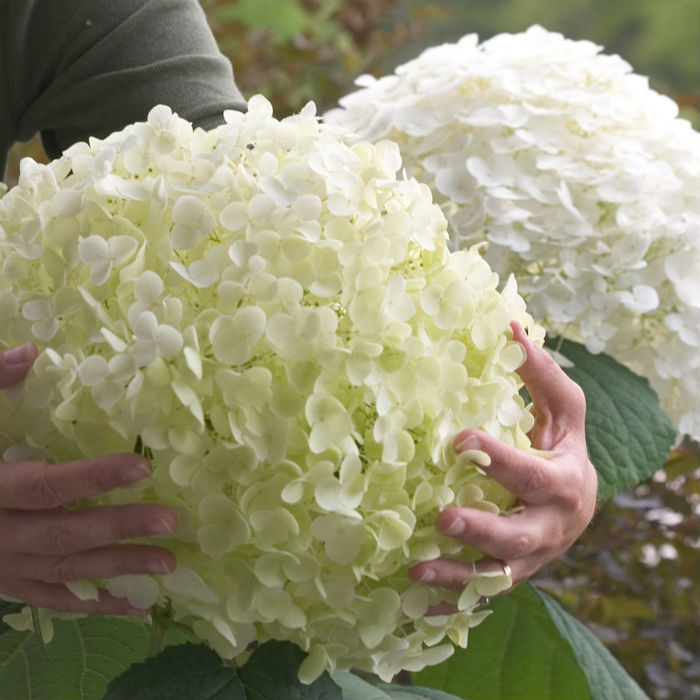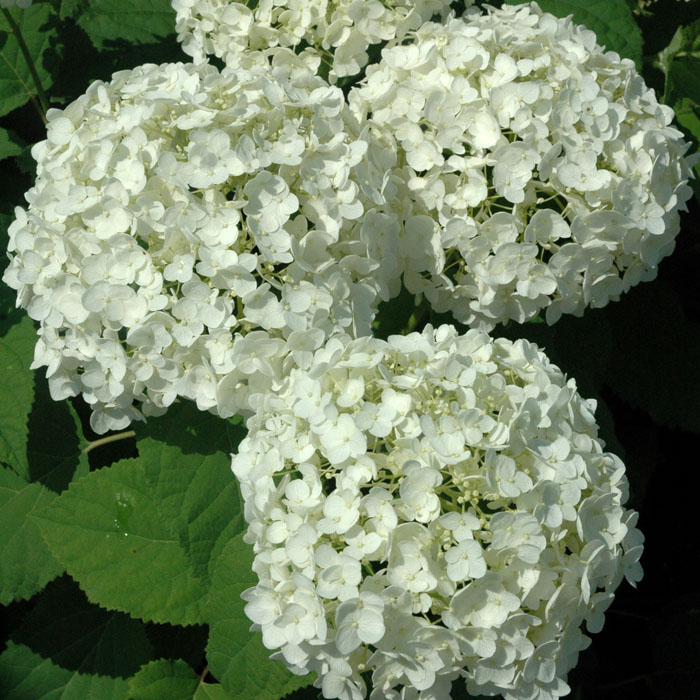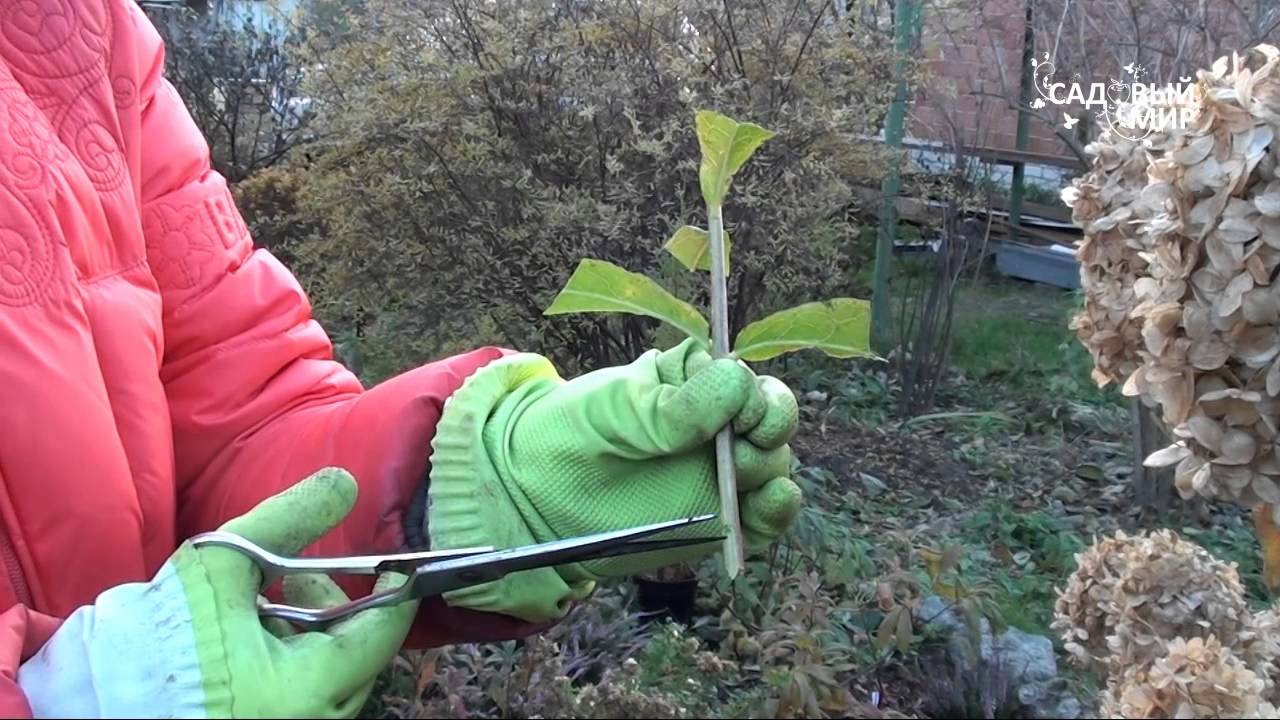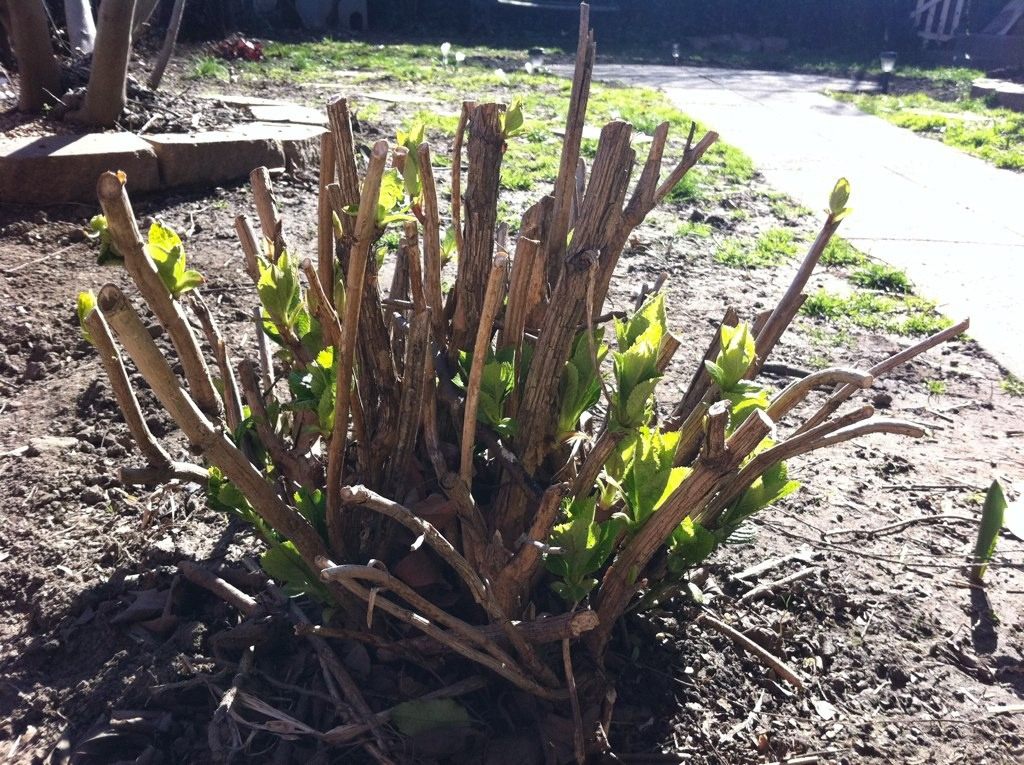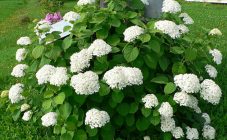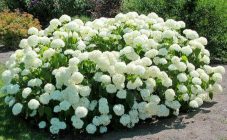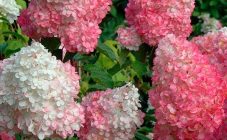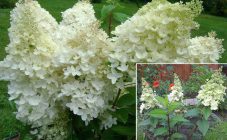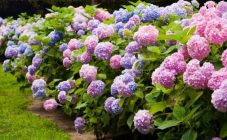Content:
Hydrangea tree variety has a large number in nature. The culture is increasingly used in gardening garden plots.
Culture information
The plant belongs to the Hortensia family. Brought culture from North America. In nature, it is found on rocky and wooded mountains, along the banks of the streams of Indiana, Oklahoma, Missouri, New York. On the territory of China and India, tree hydrangea also grows. The shrub is striking in its beauty and variety of color palette. Hydrangea can grow up to two meters in height.
The inflorescences are large, reaching 30 centimeters in diameter. There are small flowers in the center, larger ones at the edges. The maximum bud size is up to 3 cm.
The leaves are voluminous, elliptical in shape. In some varieties, the rich green color of the leaves remains until the very cold. In other species, the shoots turn red by the end of August.
Characteristics of varieties
To date, breeders have bred a huge number of varieties of tree hydrangea. The most popular varieties are with good winter-hardy and decorative qualities, which allows them to be planted even in the cold regions of Russia and the Moscow region.
Description of the most popular varieties:
- Anabel is a white treelike hydrangea. Sometimes there are cream flowers, collected in a globular inflorescence. They reach 20 centimeters in diameter. Basically Annabel grows up to 1.5 meters. Sometimes it reaches three meters in height. Bloom lasts from June to September. There are a lot of inflorescences, because of them the branches tilt down. Leaves do not change color until frost. The variety can grow up to 40-50 years old. The shrub can withstand 40-degree frost. It can tolerate drought, but the plant still needs regular moisture. When watering with a special colored solution, hydrangea can change the shade of the buds.
- Grandiflora - the variety appeared in 1862. This is a product of the selection of the Anabel culture. Cream or yellow petals. The flowers are larger. The height of the bush can be up to 1.5-2 meters. Blooms in June - September. The leaves are large, bright green. It transfers cold up to -30 degrees. It grows quickly - up to 25 cm per year. Resistant to pests. The bush is drought-resistant. In rainy weather, watering should be reduced so that fungal diseases do not develop. The soil should be rich in nutrients.
- Incredibol is a woody hydrangea with larger flowers than other varieties. A distinctive feature is the color change of the petals from green to white. The bush reaches one and a half to three meters in height. It is considered a fairly tall hydrangea. Inflorescences are very heavy and large, up to 30 cm in diameter. The bush branches are bent under their weight. Withstands temperature extremes, drought, frost and air pollution.
- Invincibelle is a tree-like hydrangea of a dark pink color. In shape, the inflorescences resemble lilac twigs. Over time, color saturation appears to have faded when exposed to sunlight. The flowers turn light pink. The hydrangea tree can withstand frost, gas pollution and dry periods.
- Pink Pinkushen is a small and compact bush, 1.5 meters wide and 1.2 m high. The inflorescences resemble a pyramid in shape, the color of the petals is white-pink. The color does not change during the entire budding period. The shrub is highly resistant to frost, pests, bad air, periods of drought.
- Hydrangea Sterilis - characterized by high survival rate of cuttings, rapid growth, long and abundant flowering in July - October. The hydrangea bush is quite large. Height - up to two meters, width - up to 2.5 m. The petals change color from green to white. The bush is resistant to temperature extremes.
- Hayes Starburst was named after the scientist Hayes Jackson. The inflorescences are dome-shaped, the flowers are distinguished by white double petals. The budding period is from the beginning of June to the appearance of frost. Leaves are bright green, retain their color until autumn. The variety is frost-resistant. The height of the bush reaches 1.2 meters. The branches are strong enough and withstand the load.
Due to the variety of varieties, everyone can choose a hydrangea bush suitable for the site.
Agricultural technology of cultivation
Choosing a landing site
The landing site must be lit. But so that the hydrangea is not under the scorching rays of the sun. Otherwise, flowering will be reduced by several weeks. In the shade of the hydrangea, the petals and inflorescences become smaller.
The place should be closed from drafts. Since the shoots become heavy during flowering and lean to the ground, they will fall in different directions with gusts of wind. It will be ugly.
A distance of 2-3 meters is left from neighboring trees so that they do not take all the moisture.
Gardeners consider the north side near buildings to be a suitable place.
Soil preparation
Suitable soil types are slightly acidic (pH 5.0) and acidic loams. Treelike hydrangea is more tolerant of the presence of lime in the soil. Alkaline earth is generally not suitable.
To acidify the soil, add: peat, pine bark, sawdust, 6 months before planting.
Seedling preparation and propagation
Hydrangea cultivation is carried out in several ways:
- Planting ready-made seedlings. Buy in early spring. An hour before disembarkation, the hydrangea is placed in warm water with potassium permanganate.
- Harvesting cuttings. Carried out in the second half of June or early July in the morning. First you need to cut annual, not hardened cuttings with 2 internodes. You need to get rid of half of the leaves. The lower cut is treated with a preparation that stimulates root growth, for example, Kornevin. A substrate is poured into the container, consisting of 1 part of sand and 2 peat. A stalk is placed at an angle of 45 degrees and to a depth of 2-3 cm. All seedlings should be 7-10 centimeters apart. The rooting process takes about a month. Cuttings can be planted by August.
- Reproduction by layering. The lateral annual shoot is placed in a trench dug to a depth of 10 cm. Layers are fastened with wire pins, sprinkled with earth. Around the appendix, the soil is loosened and watered. Next year in the spring, you can separate the layers and plant them.
Disembarkation
Before budding in early spring, they begin planting in open ground.
Stages:
- Dig a hole 70 cm deep and 50 cm wide.
- The distance between several bushes is 1.5 meters, as the roots of the hydrangea grow horizontally.
- The well is filled with 1 hour - peat, 2 hours - humus, 1 hour - sand, 2 hours - black soil.
- The seedling is taken out of the container with manganese and the roots are shortened. Leaves and branches with damage are removed.
- Place the bush in the hole. The roots are spread in different directions.
- Cover with soil. The root collar should be covered with earth no more than 3 cm.
- Ramp down.
- Water abundantly so that the earth is saturated up to half a meter.
With proper planting, flowering is observed for 5 years.
Hydrangea care
It is necessary to water, fertilize, mulch, prune the plant.
Top dressing
Stages:
- After disembarkation, after 2 weeks, they are fed with a mixture of urea - 20 grams, potassium sulfate - 25 g, 40 grams of superphosphate. Fertilized annually in early spring;
- At the beginning of flowering, fertilize with organic and mineral substances. For example, Kemira-flower will do. You can make a mixture: superphosphate (50 grams) and potassium (40 g), added per square meter. Do not add a lot of nitrogen - the petals will take on a greenish tint. The plant's resistance to frost also decreases;
- At the end of summer, rotted manure is brought in, 15 kilograms per square meter.
Watering
On very hot days, hydrangea should be watered every two days. The soil should be soaked up to half a meter deep and 1 meter in diameter. Once a month it is watered with manganese solution for the strength of the branches.
Mulching
This procedure keeps the plant from overheating and helps to get rid of weeds.
In the spring, peat, a mixture of compost and sawdust are added to the mulch. This will increase the acidity of the soil.
Pruning
Pruning is done annually in spring and autumn. They spend it for 3 years after disembarkation.
Stages:
- Prevention - removal of broken and dead shoots.
- Rejuvenation - for 5 year old plants. Remove old branches.
- Formation - last year's branches are reduced to 4 buds.
- Thinning - they remove the thickening bush and non-flowering branches.
Pruning improves the shape of the bush, flowering, and corrects the number of inflorescences.
After wilting, flowers are cut in autumn.
Warming
Stages:
- Remove foliage;
- Pour sawdust under the bush;
- Put boards around the bush and attach shoots to them;
- Cover with foil and sawdust.
In such conditions, hydrangea will have an attractive appearance for many years.
Advantages and disadvantages
Pros of tree hydrangeas:
- High winter hardiness;
- Almost all cuttings take root;
- They develop well on slightly acidic soils and moderately transfer lime in the ground;
- Grow back normally after a frosty winter.
Minuses:
- May be affected by fungal diseases;
- Branches can break under the weight of the inflorescences.
Treelike hydrangea is an unpretentious and cold-resistant plant.
